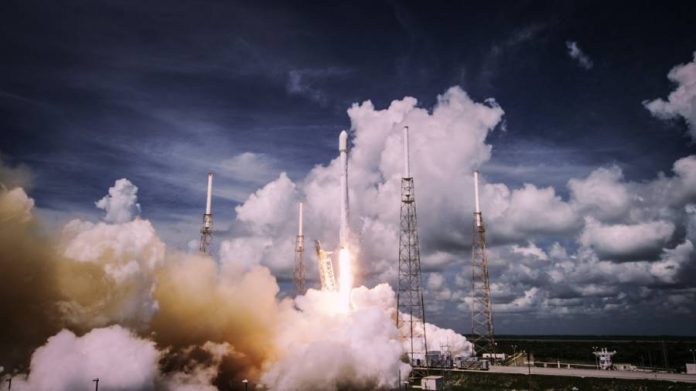
SpaceX successfully launched one of its Falcon 9 rocket on Saturday, the first endeavor of the Iridium-1 NEXT Mission delivering ten satellites for the telecom company to low-Earth orbit.
The launch is the first one since the firm’s accident last September, when one of the rockets supposed to kick off the Iridium missions exploded into a fireball that consumed both the spacecraft and the satellites it was carrying.
The company led by Elon Musk also managed to recover the first stage of the Falcon 9 by landing it on a platform stationed in the Pacific Ocean. Data gathered from the successful liftoff and landing is paramount for future SpaceX missions.
SpaceX delivered 10 of 70 Iridium satellites

SpaceX’s Iridium-1 NEXT Mission is a multiphase endeavor that will upgrade Iridium Communications’ satellite constellation currently sitting above our planet in low-Earth orbit.
Saturday’s launch carrying ten satellites is the first of seven scheduled over the span of 14 months. The space agency will carry ten satellites at a time on different Falcon 9 rockets.
Iridium’s new in-orbit network will consist of 70 NEXT telecom satellites, which will replace the current ones that can no longer provide proper support for incoming and outgoing communications.
SpaceX will struggle to pick up the pace again
A report by The Wall Street Journal surfaced on Friday on the eve of the recent Falcon 9 launch, detailing the implications of the failed September liftoff could have had for the company.
The business outlet learned that SpaceX had lost an estimated $260 million in 2015 after an accident in June resulted in the explosion of a Falcon 9 rocket and a Dragon cargo capsule destined to resupply the ISS as per NASA orders.
Experts conclude that even with the eight successful launches it had in 2016, the company did not meet its earning goals last year. SpaceX charges approximately $60 million per launch, from which only a small profit remains after expenses are deducted.
Succeeding in launching more and more missions every year is crucial for SpaceX since it has more ambitious goals than becoming the main space transport company in the world.
While this first stage as a private delivery service is key, the Elon Musk-led company intends to send humans to Mars to colonize it as soon as next decade. Original SpaceX plans place the first unmanned cargo missions to the Red Planet at a 2018 takeoff date.
Musk will, presumably, use his newly merged Tesla-SolarCity firm to develop technology that can be used to power the long journey ahead of the Interplanetary Transport System. If everything goes according to plan, SpaceX will build the ITS and humans will head for Mars in 2025.
Source: SpaceX











